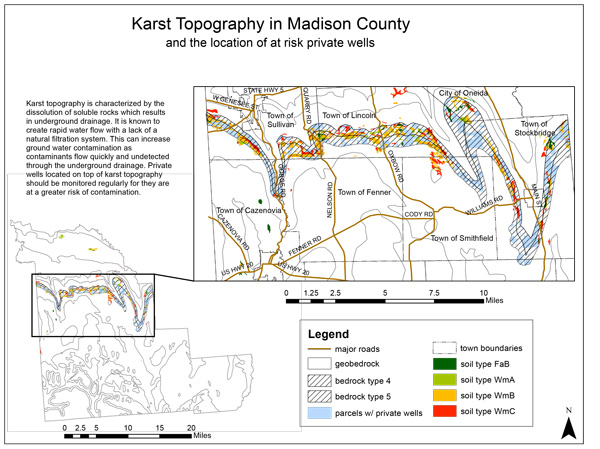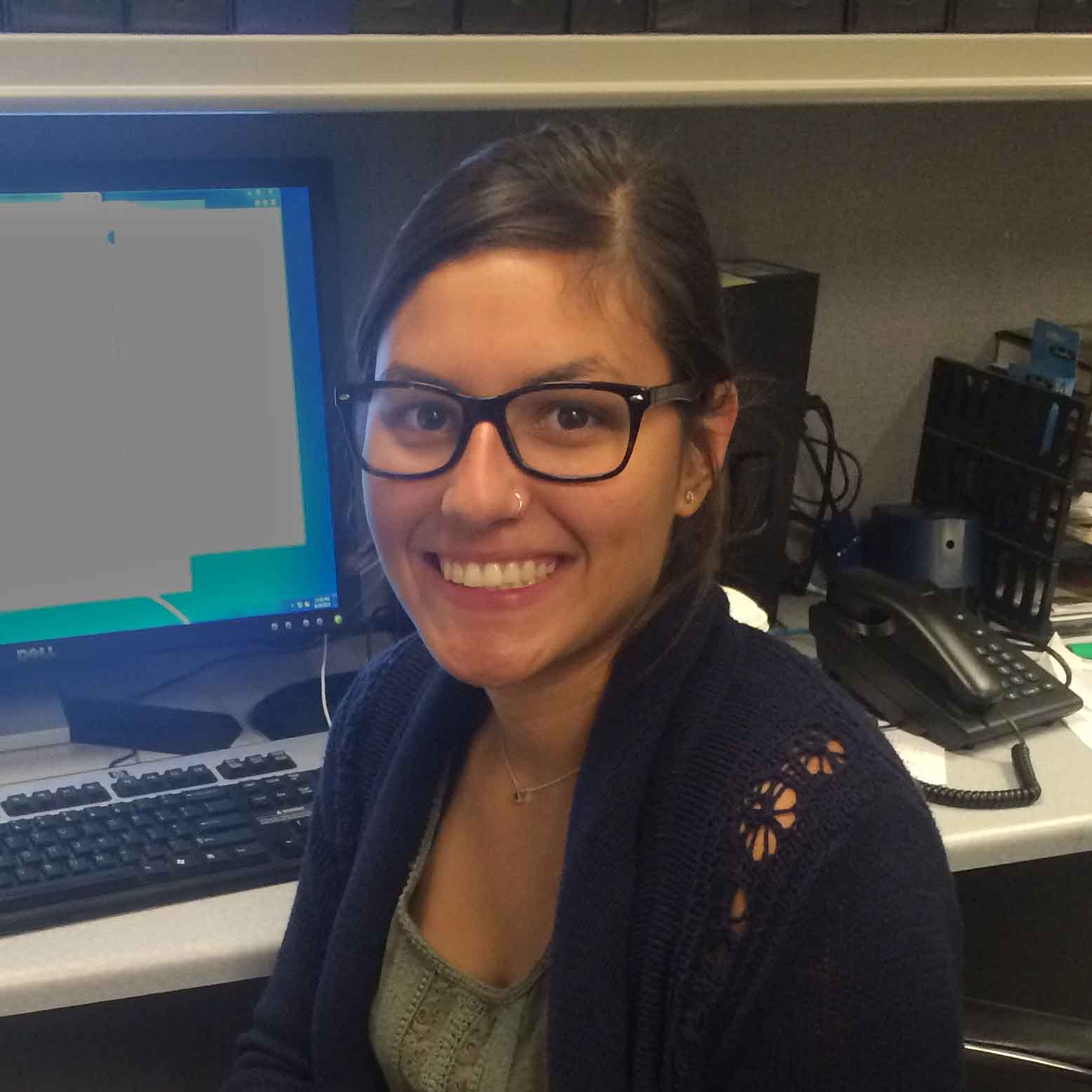
One of several GIS maps created by Kayleigh Bhangdia ÔÇÖ16 during her summer internship with the Madison County Department of Health.
Thanks in part to research conducted by a and student, Madison County will receive more than a half-million dollars in federal funding for well-water testing and remediation to take place during the next five years.
Kayleigh Bhangdia ÔÇÖ16, of Poughquag, N.Y., worked with the Madison County Department of Health this summer, via , to examine where private drinking wells may be threatened by known contaminated sites, spills, agricultural runoff, and bulk storage locations.
Bhangdia used her knowledge of , learned in a 51Ěš┴¸ course, to examine U.S. Department of Environmental Conservation statistics about spill sites and dangerous ground-water issues. She then overlayed that information onto a map of Madison CountyÔÇÖs private well locations, which nearly half of the local population relies on for drinking water.

Kayleigh Bhangdia ÔÇÖ16
ÔÇťThere could be huge distributions of contaminants and no one would know, given the lack of regulation,ÔÇŁ Bhangdia said.
Geoffrey Snyder, Madison County environmental health director, said BhangdiaÔÇÖs analysis also helped to point out locations of potential well and aquifer contamination related to geological conditions like karst (see definition above).
Madison County was one of just 20 recipients of grant funding nationwide from the U.S. Centers for Disease Control.
Snyder said the grant will pay for a full-time water resource position and for more than $28,000 per year in water quality tests of residential wells, and the creation a project committee to improve the countyÔÇÖs capacity to respond to water contamination incidents.
Bhangdia is not the first 51Ěš┴¸ student to work with the county through the Upstate Institute. Olivia Gamble ÔÇÖ15 of Westfield, Mass., studied data related to expectant mothers, breastfeeding rates, and lead in the home.
ÔÇťThe professional qualities exhibited by these 51Ěš┴¸ students, and the high level of GIS skills they bring to our health department, will continue to make these collaborative opportunities of great value to this office, and the students a pleasure to work with,ÔÇŁ Snyder said.
ÔÇťKayleigh and Olivia have developed strong skills at 51Ěš┴¸ that will serve them well as they pursue careers in public health after they graduate,ÔÇŁ said Julie Dudrick, Upstate Institute project director. ÔÇťThey benefit from having the opportunity to further develop those skills in a community-based setting, and their work benefits our community at the same time.ÔÇŁ
Bhangdia said the work was right in line with her future career goals.
ÔÇťBefore taking my first geography class at 51Ěš┴¸, I always assumed I wanted to pursue medical school after graduation. But after exploring various geography and environmental studies classes I realized my passions aligned more with public health and environmentalism,ÔÇŁ Bhangdia said. ÔÇťWorking at the health department was an extremely rewarding experience. I really felt like part of this community.ÔÇŁ
Related Links
